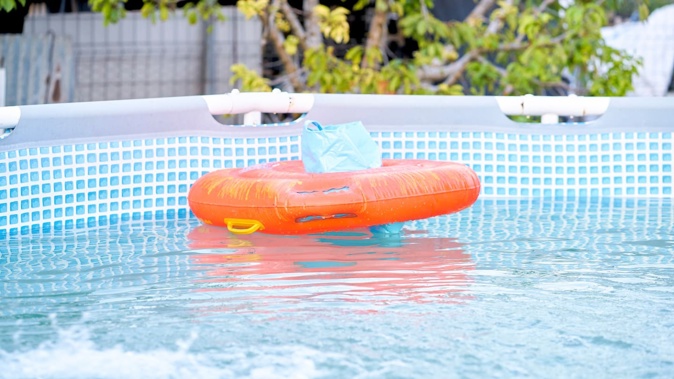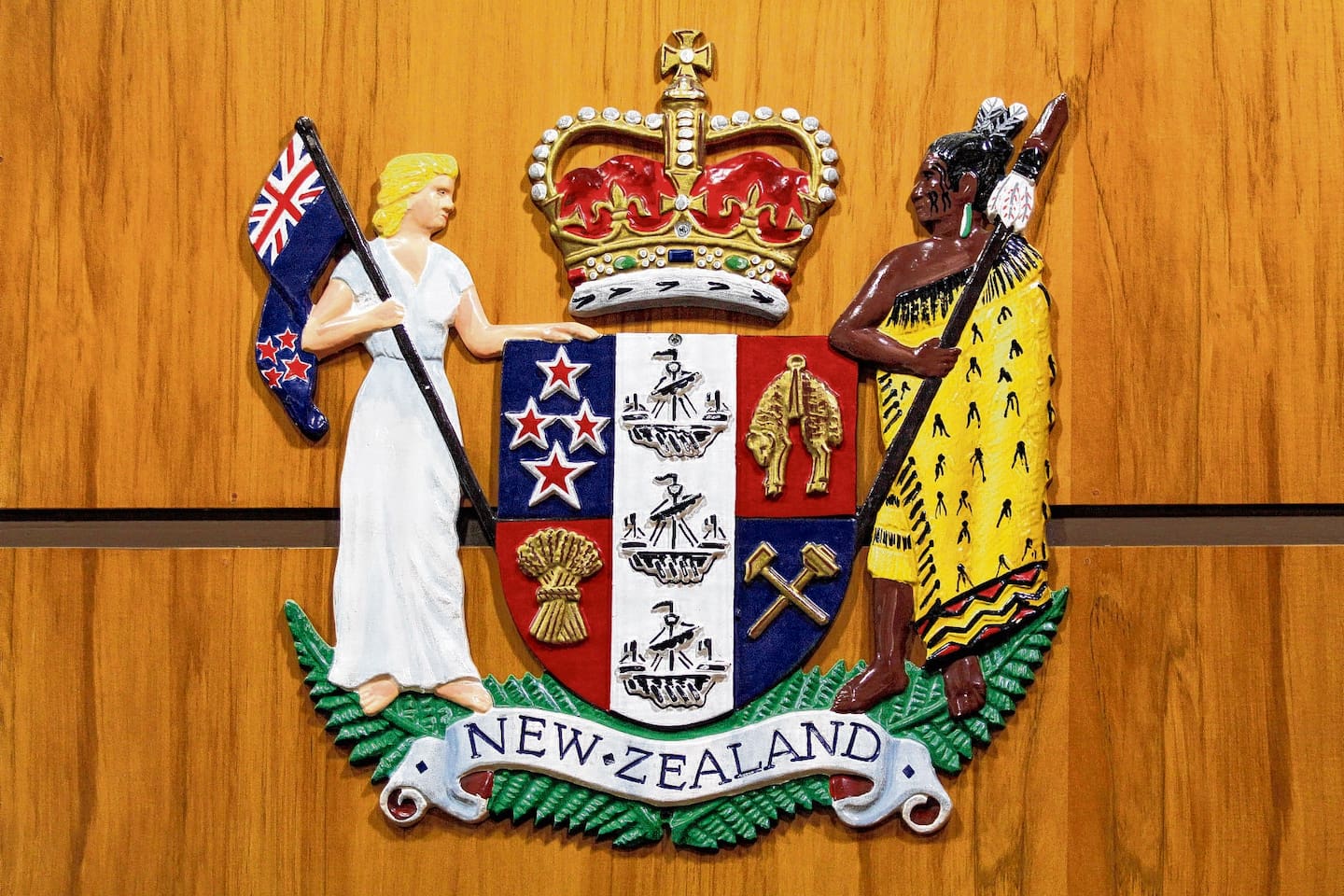

An unsupervised toddler wandered out of a relative’s house and into the backyard, where a swimming pool was set up with a seat, a concrete slab, and other items nearby.
It remains unclear exactly how Aromaia Morehu Leoni Duff got into the temporary pool, but she was spotted soon after by her mother, who ran frantically to her and tried to save her.
Despite CPR efforts by the woman, and emergency service personnel soon after, Aromaia, 20 months old, couldn’t be saved.
The tragedy has now sparked further concerns by a coroner and Water Safety New Zealand (WSNZ) about the rise in popularity and use of temporary swimming pools.
Aromaia’s death is the fifth involving a temporary pool since 2014.
In findings released today, Coroner Heidi Wrigley reaffirmed WSNZ’s assertion that there was an “emerging pattern of drownings” involving the pools.
The drownings also aligned with an increase in supply and affordability of the pools, which were popping up in the backyards of more and more Kiwis’ properties.
WSNZ acknowledged the proliferation and urged Kiwis to either fence the pools or empty them immediately after use.
Earlier this year, Coroner Mike Robb called for the sale of temporary pools under 1.2m to be banned, and recommended that higher pools only be sold with an appropriate safety-gated entry.
But banning the pools was still a complicated issue for the Ministry of Business, Innovation and Employment (MBIE), which, in Coroner Wrigley’s findings, acknowledged the importance of temporary pools not being used by young families.
‘No more than 15 minutes’
According to the findings, Aromaia, her siblings, and parents were temporarily living at her grandmother’s home in Napier in March 2023 after their own home was affected by Cyclone Gabrielle.
There were 14 people living at the house at the time, a situation described by the grandmother as “chaotic”.
A Bestway Steel Pro temporary pool, 12 feet in diameter and 76cm high, had been set up in the backyard about two months earlier by a previous boarder.
 Coroner Heidi Wrigley has released her findings into the death of Aromaia Morehu Leoni Duff.
Coroner Heidi Wrigley has released her findings into the death of Aromaia Morehu Leoni Duff.
Aromaia’s grandmother told the coroner she had planned to take it down the weekend after the toddler died, as part of a clean-up project.
On the day of her death, Aromaia was in the lounge with her mother, while her father was outside in a hammock on his phone.
Her mother then went to the bathroom, leaving the toddler with her 4-year-old brother.
The coroner said there was no evidence that she had asked the girl’s father to watch her.
Her mother was out of the room for “no more than 15 minutes”, while the girl’s father didn’t hear his daughter leave the house or enter the pool.
When Aromaia’s mother got to the back door, she saw her in the pool.
She immediately ran outside, yelling and screaming, and grabbed her daughter, only to find her unresponsive.
The woman began CPR, which was continued by an off-duty paramedic and firefighters, but the child was unable to be saved.
When police arrived at the property, officers found multiple children’s toys, plastic deck furniture, and other furniture “scattered about”, including a high-backed plastic outdoor chair about 1.5m to 2m from the pool.
Directly beside the pool was a long concrete slab positioned on top of cinder blocks, about 2m in length, and 30cm to 40cm from the edge of the swimming pool.
 Water Safety New Zealand acting chief executive Gavin Walker has concerns the country’s water statistics are heading backward. Photo / WSNZ
Water Safety New Zealand acting chief executive Gavin Walker has concerns the country’s water statistics are heading backward. Photo / WSNZ
The concrete slab was about 10cm shorter than the top of the pool. Also near it, and at the same height, was one of three flexible tubes, likely for water supply.
Aromaia’s parents did not wish to be interviewed by police any further about how she might have entered the pool, the findings stated.
‘A tragedy waiting to happen’
Coroner Wrigley found that Aromaia had made her way outside by an open sliding door.
“In the absence of fencing ... and the availability of multiple lightweight items that could be used to climb up the side of the pool meant that Aromaia’s drowning was a tragedy waiting to happen,” she said.
“As I expect Aromaia’s family are painfully aware, her death was preventable in multiple ways.”
She said that included closing the external door, her mother “explicitly” handing over responsibility for her supervision to the girl’s father, and having a temporary fence set up around the pool.
The coroner said unfenced temporary pools posed a “grave hazard”.
She recommended that unfenced pools “should never be in operation when young children are around due to the challenge of the constant and close supervision which is necessary to manage the risk of them drowning”.
 Water Safety NZ says any portable pool deeper than 400mm is subject to the same fencing rules as in-ground pools, and should have a fence at least 1.2m high. Image / WSNZ
Water Safety NZ says any portable pool deeper than 400mm is subject to the same fencing rules as in-ground pools, and should have a fence at least 1.2m high. Image / WSNZ
“Filled unfenced temporary pools between 40cm and 1.2m in height can be extremely dangerous for young children ... due to their high risk of quickly and silently drowning in them when not being constantly and closely supervised.”
She hoped the recommendation could prevent further deaths.
The coroner made inquiries with WSNZ, MBIE, and Plunket about a possible collaborative approach to promoting awareness.
However, WSNZ said it was a charitable organisation with limited funding, while MBIE indicated it had engaged with both groups to raise awareness of pool barrier requirements.
A backyard hazard
WSNZ acting chief executive Gavin Walker told NZME that many well-meaning Kiwis were buying the pools but underestimating their danger.
He was “nervous” about the trend of deaths that was beginning to unravel as the availability of the pools, particularly over the past five years, increased.
“Essentially, we’re putting that risk or hazard back in people’s backyards.”
He supported Coroner Robb’s earlier call for a ban on the pools, as trying to get Kiwis to put a fence around them, or spend thousands on a building consent, was unrealistic.
Nor did he think people would empty it after a day’s use, given the cost of having to fill it up.
Twenty years ago nine children were drowning a year. It was currently fewer than two.
“So we have these things, for really good reason, being put in people’s backyards, and what we’re concerned about is, we’re starting to see young people drownings on the increase again after 20 years of next to nothing,” Walker said.
“We’re really worried that we’re going to be back in a situation where we’re losing a reasonable number of young kids to drowning, and it’s easily foreseeable.
“We’re just trying to call that out, we’re not trying to be the fun police.”
Belinda Feek is an Open Justice reporter based in Waikato. She has worked at NZME for 10 years and has been a journalist for 21.

Take your Radio, Podcasts and Music with you









